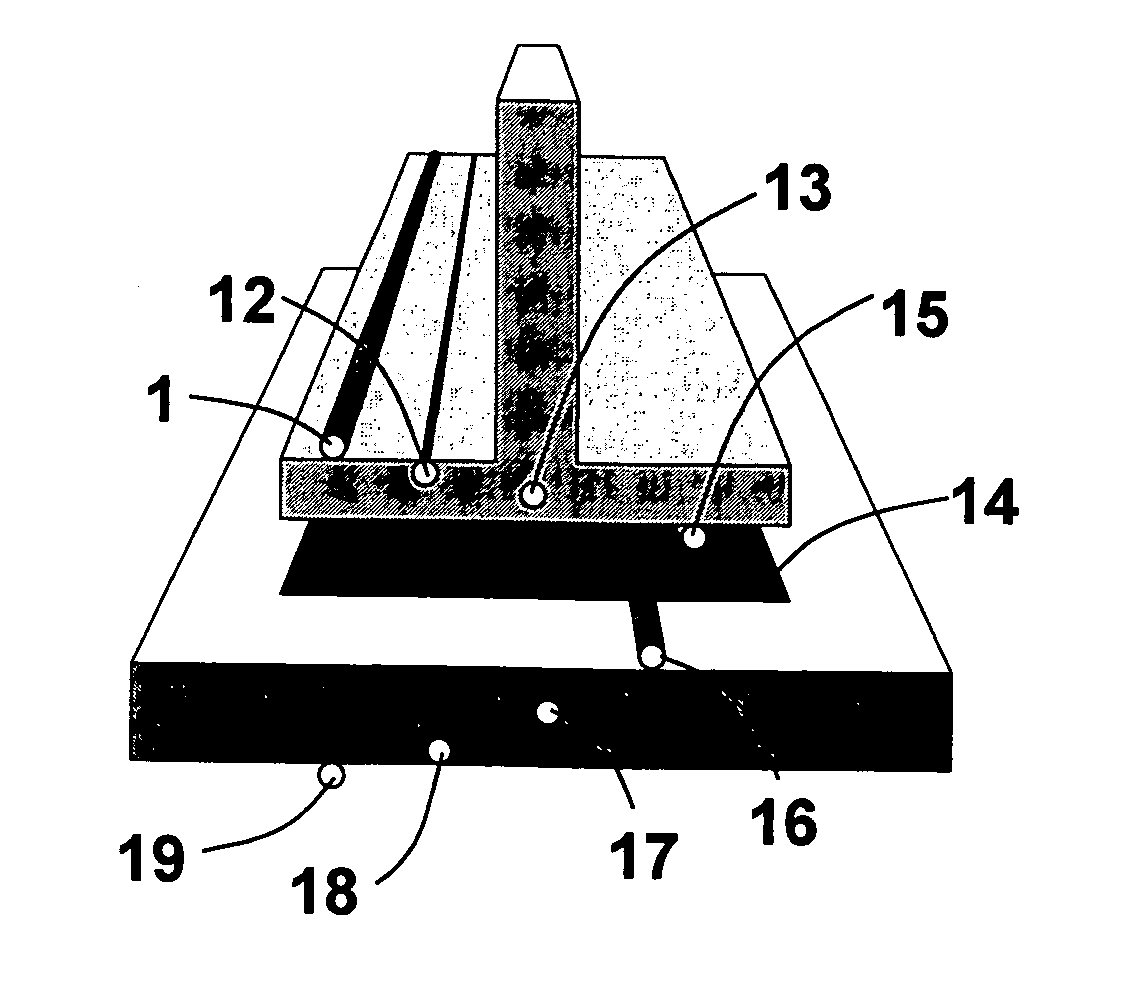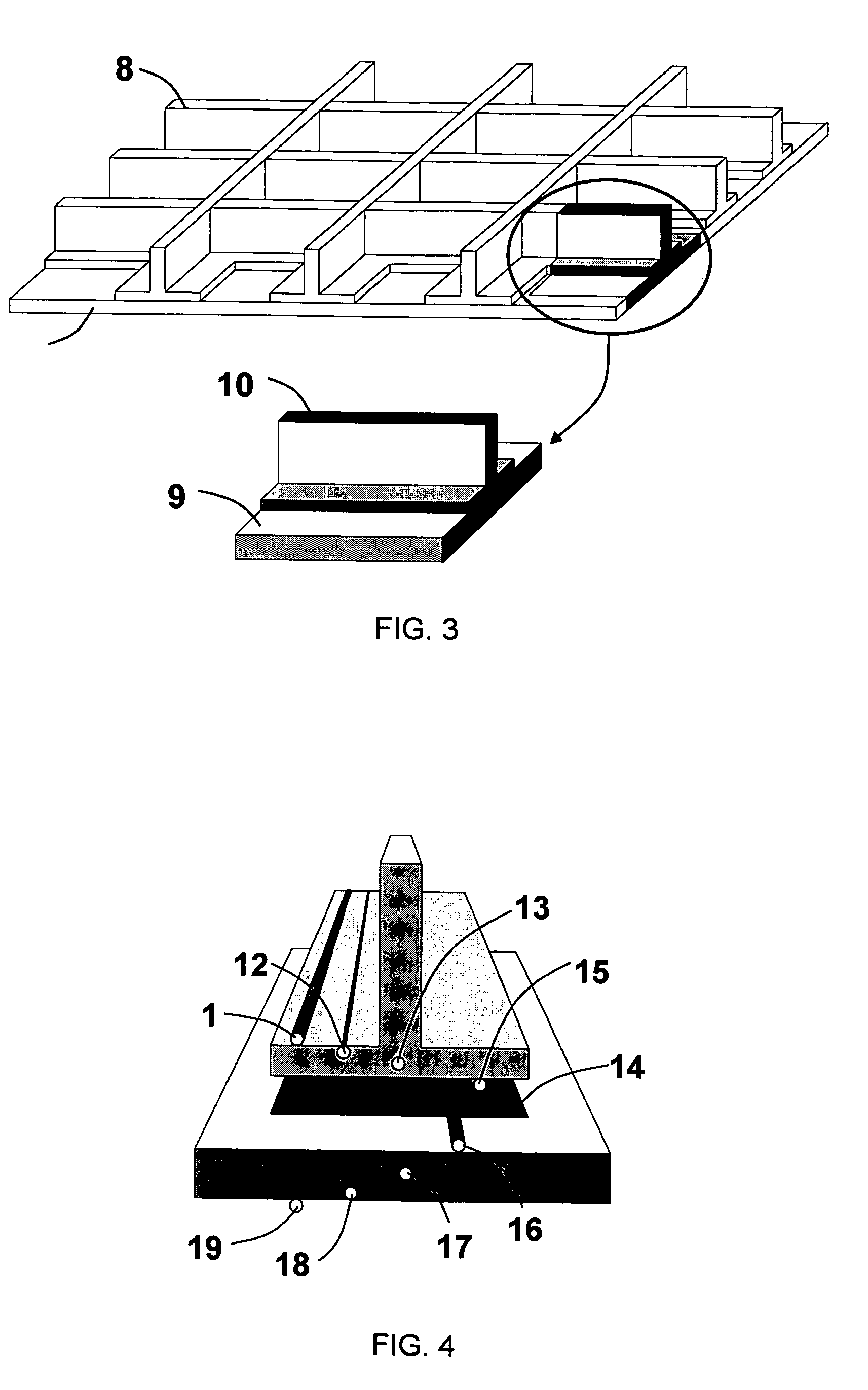Method to monitor structural damage occurrence and progression in monolithic composite structures using fibre Bragg grating sensors
a monolithic composite structure and sensor technology, applied in the direction of instruments, optical elements, optical apparatus testing, etc., can solve the problem of complete load re-distribution
- Summary
- Abstract
- Description
- Claims
- Application Information
AI Technical Summary
Benefits of technology
Problems solved by technology
Method used
Image
Examples
Embodiment Construction
[0030]As represented in FIG. 1, a fibre optic Bragg grating (FBG) 1 is a periodic pattern 2 induced in the refractive index of the core 3 of a fibre optic 4 by means of an intense UV holographic beam.
[0031]The periodic optical structure of a FBG behaves as a very narrow optical filter with its reflective spectrum, shown as 5 in FIG. 2, centred in a wavelength given by the Bragg condition, I=2 nL, where I is the central wavelength of the spectral signal of the grating (known as Bragg wavelength), n is the average effective refractive index along the grating, and L is the pitch of the periodic structure of the grating.
[0032]If a FBG is submitted to a uniform mechanical strain, the pitch and the refractive index of the grating changes, and the centre of the spectrum shifts to the position 6 given by the new Bragg condition. The relation between this strain and the wavelength shift is absolutely linear. Something similar happens with thermal strain. This singular photoelastic and thermo...
PUM
| Property | Measurement | Unit |
|---|---|---|
| refractive index | aaaaa | aaaaa |
| refractive index | aaaaa | aaaaa |
| wavelength spectra | aaaaa | aaaaa |
Abstract
Description
Claims
Application Information
 Login to View More
Login to View More - R&D
- Intellectual Property
- Life Sciences
- Materials
- Tech Scout
- Unparalleled Data Quality
- Higher Quality Content
- 60% Fewer Hallucinations
Browse by: Latest US Patents, China's latest patents, Technical Efficacy Thesaurus, Application Domain, Technology Topic, Popular Technical Reports.
© 2025 PatSnap. All rights reserved.Legal|Privacy policy|Modern Slavery Act Transparency Statement|Sitemap|About US| Contact US: help@patsnap.com



